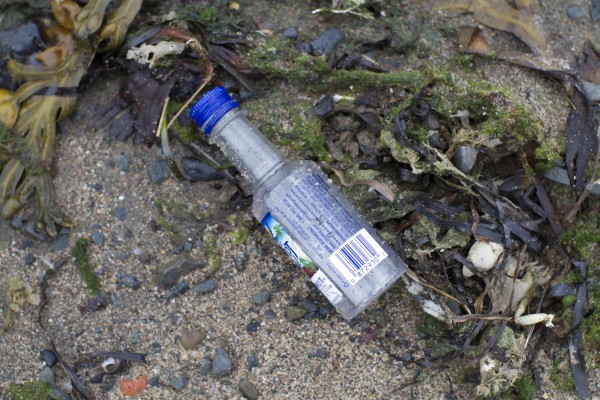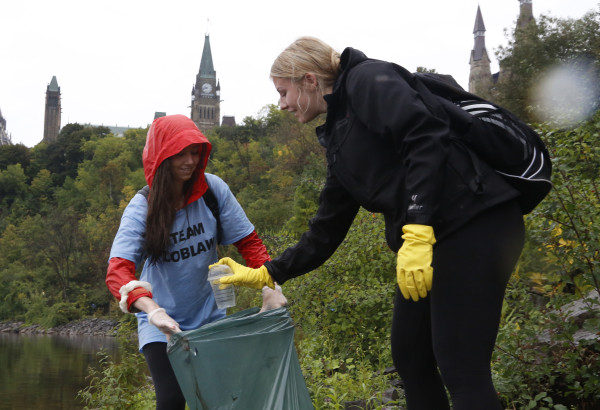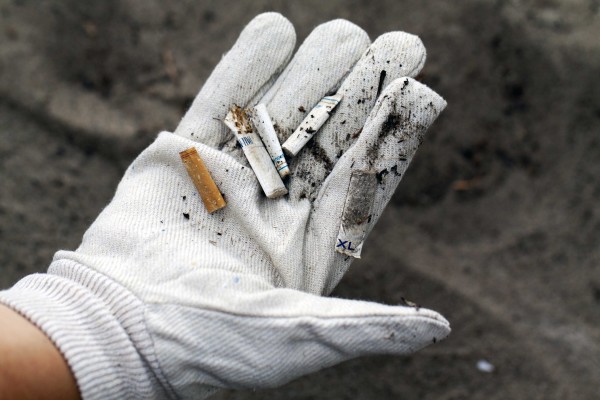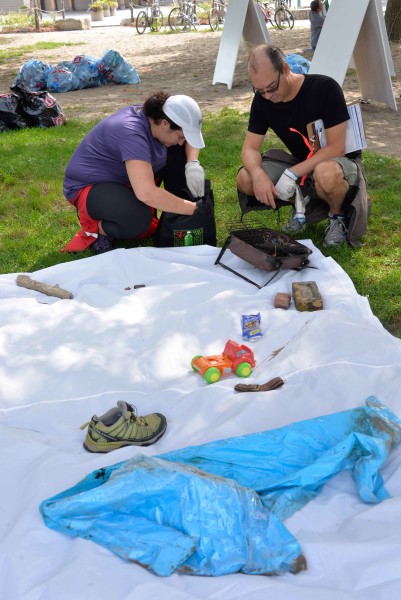Unseen threat in our waters, and what you can do about it this Earth Day
A bathtub full of water drawn from near the shoreline of any of the Canadian Great Lakes might look clean to the naked eye. But if you examined it with a microscope, you’d find it contained on average more than 10 different tiny pieces of plastic.
Microplastics cause environmental, societal and human health risks because they can be ingested by mussels, plankton, fish and birds when they are mistaken for food. Scientists fear that microplastics expedite the spread of disease and absorb toxic chemicals that may end up in the food chain.
Some of these microplastics started out tiny, such as the microbeads found in toothpastes, liquid body soaps and medical supplies. Others started as big pieces known as macroplastics, such as plastic bags or synthetic clothing that have broken down into tiny pieces of microplastic.
What you can do to help
There are Great Canadian Shoreline Cleanups organized across the country for Earth Day this Friday and over the weekend to collect and properly dispose of plastic and other waste. Visit here to find a cleanup near you to join this weekend.
Plastics are among the most common items picked up during the cleanups: Water bottles, caps, cigarette filters, plastic bags and toys.
Results from the Great Canadian Shoreline Cleanup, a conservation initiative by WWF-Canada and Vancouver Aquarium, regularly show that cigarette butts, food wrappers and plastic bottle caps make up the most commonly collected “dirty dozen” that pollute our waters. Volunteers picked up 409,417 cigarette butts from shorelines across Canada last year and more than 93,000 food wrappers.
These macroplastics are as bad as or worse than microplastic pollution. They clog waterways, get eaten by marine life and foul beaches.
The community-led cleanups are some of the only estimates of how much plastic pollution is flowing into our lakes, rivers and streams because there is no comprehensive monitoring program to track plastic pollution.
To help get a sense of how much plastic pollution is in our water, WWF-Canada, through a Loblaw Water Fund grant initiative, is helping Ontario Streams track microplastic pollution in three urban watersheds of Lake Ontario.
How to keep plastic from shorelines
Most of the plastic pollution in our water comes from everyday items that we buy, because so much of it incorporates plastic. Think of the plastic mesh-bag your avocados come in, your cold meat packaging, the new toy for your child. These are all single-use items that will hurt our environment forever. It’s a big price to pay for convenience.
Recycling is one option to keep macroplastic out of our waters. Unfortunately, it isn’t a long-term solution because the plastic in single-use products, like straws and yoghurt containers and packaging, is usually not very recyclable. In some cases, less than 0.1 per cent of the plastic is recyclable and the rest ends up in the landfill, where wind and water can carry it to our rivers, lakes and oceans.
To really reduce the plastic that is polluting our waters, we need to change the way we shop and how much we rely on single-use items. To get you started, here is a list of some easy changes you can make to your daily routine to reduce the amount of disposable plastic you use:
- Take reusable containers to your local bulk food store to buy products usually sold in disposable plastic (e.g. nuts, spices, cleaning agents).
- Avoid buying fruit wrapped in plastic or in a plastic container. Nature already protects the fruit with its own wrapping.
- Bring a cloth bag for your veggies instead of using the disposable bags offered in stores.
- Use powdered laundry soap in a cardboard box instead of liquid soap in a disposable container.
- Buy a steel straw and take it with you out to dinner so you can say no to disposable plastic straws.
- Make homemade bread on weekends and avoid the single-use loaf bags.
Plastic pollution is just one of the many threats facing Canada’s freshwater. Check out WWF’s Watershed Reports to find out more about the health of and threats to the watershed you live in.
Rebecca Dolson is WWF-Canada’s Specialist on Freshwater Policy.





